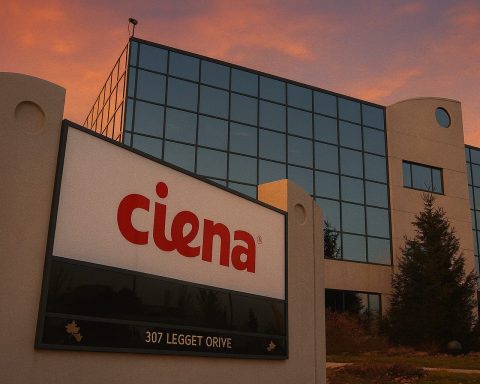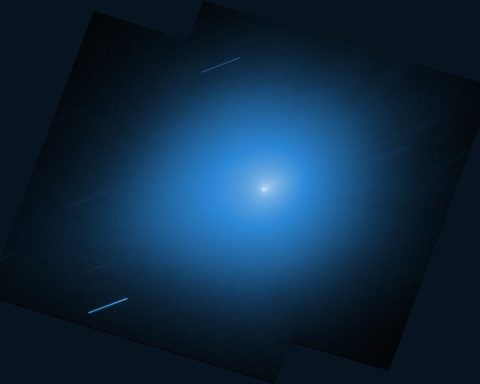- Commercial Maxar satellite imagery shows Fordo bomb craters rapidly clearing and heavy engineering near damaged ventilation shafts after Iran’s airstrikes, with General Dan Kane confirming the use of 12 Massive Ordnance Penetrator bombs described as turning “night into day”.
- Natanz enrichment complex repairs have begun, with ISW analysts noting restoration work and reports of a destroyed radar installation in Khuzestan province.
- Japan launched the final H-2A rocket carrying the GOSAT-GW greenhouse gas and water-cycle satellite, retiring the H-2A after 50 missions with a 98% success rate and equipping GOSAT-GW with a microwave radiometer and greenhouse gas sensor.
- The H-2A retirement sets the stage for Japan’s cost-effective H3 launcher to take over future missions.
- Italy launched seven HEO satellites as part of the IRIDE constellation, funded by Italy’s PNRR and coordinated by ESA and ASI, with involvement from more than 70 companies including Thales Alenia Space.
- ESA released first images from its Forest Carbon Stock Satellite, launched in April, using P-band synthetic aperture radar to penetrate clouds and forest canopies and directly measure woody biomass.
- Muon Space released first images from its FireSat Protoflight satellite, the initial step in a planned 50-plus satellite constellation to monitor wildfires, using multi-band infrared sensors to enable global 20-minute fire detection.
- Meteosat 13 (MTG-S1), the latest in Europe’s third-generation weather satellites, will launch on July 1 aboard a SpaceX Falcon 9 from Cape Canaveral to support Copernicus.
- Copernicus data show the Ligurian Sea’s surface temperatures in June 2025 are 5-6°C above normal, exceeding 27°C in some areas.
- The Vera C. Rubin Observatory identified 2,104 new asteroids in a few nights, including seven near-Earth objects, with an 8.4-meter mirror and the world’s largest digital camera, and could raise the known asteroid count to five million.
Latest Satellite News
The Latest in Satellite Technology, Astronomical Discoveries, Climate Monitoring, and Global Space PolicyTable of Contents
1. Satellite Imagery and Geopolitics 2. Climate and Earth Observation Satellites- Japan’s Final H-2A Rocket and GOSAT-GW
- Italy’s IRIDE Constellation
- ESA’s Forest Carbon Stock Satellite
- Muon Space’s FireSat Wildfire Constellation
- Meteosat 13 (MTG-S1) Launch
- Copernicus and Ligurian Sea Heat
- Vera C. Rubin Observatory’s Breakthroughs
- Asteroid YR4: Threats and Monitoring
- July 2025 Night Sky Highlights
- Rare Daytime Fireball Meteor
- Hercules-Corona Borealis Great Wall
- SpaceX and UK’s ForgeStar-1
- Rocket Lab’s Rapid Electron Launches
- Satellite-Based Infrastructure Monitoring
- Space-Based Lightning Sensors
Satellite Imagery and Geopolitics
Iran’s Nuclear Sites Under Scrutiny
Fordo and Natanz: Aftermath of Airstrikes
Recent weeks have seen a dramatic escalation in the use of satellite imagery for real-time intelligence and global transparency. Following coordinated US and Israeli airstrikes on Iran’s nuclear infrastructure, commercial satellites from Maxar Technologies have provided the world with unprecedented views of the damage and subsequent repair efforts at the Fordo and Natanz nuclear facilities.- Fordo Facility:
- Natanz Complex:
- Damage Assessment:
- Satellite imagery is now central to verifying and publicizing military actions.
- Iran is moving quickly to restore access and function at key nuclear sites.
- The transparency provided by commercial satellites is reshaping global security narratives.
Russian Military Reserves Exposed
Recent satellite images have revealed that Russian armored vehicle depots are rapidly emptying, indicating heavy use of Soviet-era stockpiles. Experts warn that replenishing these reserves could pose a serious challenge for Russia’s military, potentially impacting its operational capabilities in ongoing and future conflicts. [4]Climate and Earth Observation Satellites
Japan’s Final H-2A Rocket and GOSAT-GW
End of an Era, Start of a New Chapter
Japan’s space program marked a historic milestone with the final launch of its H-2A rocket, carrying the GOSAT-GW satellite—a dual-purpose platform for monitoring greenhouse gases and the water cycle. The mission, delayed briefly by a second-stage electrical issue, was ultimately successful, with the satellite now operating nominally in orbit.- GOSAT-GW Capabilities:
- Transition to H3 Rocket:
- Mission Impact:
- Japan’s H-2A rocket retires after a storied career.
- GOSAT-GW will provide critical data for climate science.
- The H3 rocket will lead Japan’s future launch efforts.
Italy’s IRIDE Constellation
Italy has launched seven HEO satellites as part of the IRIDE constellation, a major step for European Earth observation. Funded by Italy’s PNRR and coordinated by ESA and ASI, IRIDE will monitor natural events, climate change, and critical infrastructure. Over 70 companies, including Thales Alenia Space, are involved in this ambitious project. [8]ESA’s Forest Carbon Stock Satellite
The European Space Agency (ESA) has released the first images from its forest carbon stock observation satellite, launched in April. Using P-band synthetic aperture radar, the satellite can penetrate clouds and forest canopies to directly measure woody biomass, aiding in forest carbon estimation and climate change mitigation efforts. [9]Muon Space’s FireSat Wildfire Constellation
Muon Space has released first images from its FireSat Protoflight satellite, the initial step in a planned constellation of 50+ satellites to monitor wildfires. Using advanced multi-band infrared sensors, FireSat will scan the globe every 20 minutes, providing rapid, high-resolution data to help detect and mitigate wildfire threats. [10]Meteosat 13 (MTG-S1) Launch
The launch of Meteosat 13 (MTG-S1), the latest in the third generation of European weather satellites, will be broadcast live on July 1. MTG-S1, equipped with advanced spectrometers, will support the Copernicus program and enhance Europe’s weather forecasting capabilities. [11]Copernicus and Ligurian Sea Heat
Copernicus satellite data show the Ligurian Sea’s surface temperatures in June 2025 are 5-6°C above normal, exceeding 27°C in some areas. The Copernicus Marine Environment Monitoring Service confirms these anomalies, raising concerns about reduced breezes and potential for intense storms. [12]Astronomical Discoveries and Night Sky Events
Vera C. Rubin Observatory’s Breakthroughs
Millions of Asteroids and Distant Galaxies
The Vera C. Rubin Observatory in Chile, featuring an 8.4-meter mirror and the world’s largest digital camera, is poised to revolutionize astronomy. In its first few nights of operation, the observatory identified 2,104 new asteroids—including seven near-Earth objects—and released images capturing millions of distant stars and galaxies.- Scientific Impact:
- Stunning Nebula Imagery:
- Rubin Observatory will transform asteroid detection and deep-sky surveys.
- Its imaging power will impact nearly all areas of astronomy.
- The observatory’s data will be a cornerstone for future research.
- [16]
Asteroid YR4: Threats and Monitoring
Earth, Moon, and the Risk of Debris
Asteroid 2024 YR4, discovered in December 2024, initially posed a 3% risk of impacting Earth in 2032, but that threat has now been ruled out. However, there remains a 4% chance it could collide with the Moon on December 22, 2032. NASA warns that a lunar impact could create debris threatening satellites and global communications.- Potential Consequences:
- Monitoring Efforts:
July 2025 Night Sky Highlights
July offers a celestial feast for stargazers worldwide:- Buck Moon:
- Planetary Alignments:
- Pleiades Encounter:
- Meteor Showers:
- Manhattanhenge and Summer Triangle:
- Favorable Viewing:
- July’s sky events are accessible to both amateurs and seasoned astronomers.
- Mercury will be visible at its greatest elongation.
- [20]
Rare Daytime Fireball Meteor
A fireball meteor was recently seen exploding in daylight over Georgia—a rare event since sunlight usually outshines meteors. Only the largest objects are visible during the day, making such sightings exceptional. [24]Hercules-Corona Borealis Great Wall
Scientists have discovered the Hercules-Corona Borealis Great Wall, the largest known structure in the universe, stretching 10 billion light-years and located closer to Earth than previously thought. This finding, using gamma-ray bursts as cosmic markers, challenges existing theories of matter distribution and cosmic evolution. [25]Space Industry and Technology
SpaceX and UK’s ForgeStar-1
SpaceX launched Space Forge’s ForgeStar-1, the UK’s first in-space manufacturing satellite, designed to produce semiconductors using space-derived crystal seeds. The mission aims to advance materials science and industrial capabilities by leveraging the unique conditions of space for chip fabrication. [26]Rocket Lab’s Rapid Electron Launches
Rocket Lab completed its 68th Electron launch, setting a new record with two launches from Launch Complex 1 in under 48 hours. The mission deployed a satellite for a confidential customer, highlighting Electron’s rapid, reliable access to space for small satellites. [27]Satellite-Based Infrastructure Monitoring
Satellite technology is increasingly being used for bridge inspections, enabling remote structural assessments. This approach reduces the need for on-site inspections and enhances safety for critical infrastructure. [28]Space-Based Lightning Sensors
Space-based lightning sensors now enable comprehensive monitoring of all lightning types globally, surpassing ground-based systems. NASA leverages these tools for both research and spacecraft safety, with open access to lightning data driving progress in atmospheric science and severe weather understanding. [29]Human Spaceflight and Tourism
Blue Origin’s New Shepard Milestones
Blue Origin’s New Shepard rocket has achieved several milestones in suborbital space tourism:- NS-33 Mission:
- Rapid Cadence:
- International Participation:
- Blue Origin is increasing the frequency and reliability of suborbital flights.
- The company is expanding access to space for private individuals and international participants.
Space Policy and Agency Updates
EU’s First Space Law
The European Commission has proposed the first EU Space Law to enhance the security of satellites against cyberattacks, limit space debris, and reduce the environmental impact of the space sector. The regulation will require operators to remove satellites after their lifespan and strengthen cybersecurity, aiming to boost the EU’s competitiveness in the growing space economy. [33]NASA’s Budget Crisis
NASA officials have discussed significant budget cuts and potential layoffs during a recent town hall. The proposed 25% funding reduction could shrink NASA’s budget to its smallest since 1961, raising concerns among employees and threatening major planetary science missions like New Horizons, Juno, and OSIRIS-Apophis. [34] [35]NASA’s Legacy and Achievements
Despite current challenges, NASA remains a global leader in space exploration, satellite development, and crewed missions. Its achievements include the Apollo Moon landings, the space shuttle program, Artemis lunar missions, and pioneering satellite technology for Earth observation, communications, and weather monitoring. [36]Outlook and Recap
Key Takeaways
- Satellite imagery is transforming global security, transparency, and disaster response.
- Climate monitoring satellites are providing critical data for understanding and combating climate change.
- Astronomical discoveries are accelerating, with new observatories like Vera C. Rubin set to revolutionize our knowledge of the universe.
- Space industry innovation is driving rapid advances in manufacturing, infrastructure monitoring, and atmospheric science.
- Human spaceflight is becoming more routine, with private companies like Blue Origin making suborbital tourism accessible.
- Policy and funding challenges threaten the pace of progress, especially in the US, while the EU moves to secure its space assets.
Looking Ahead
The coming months will see:- The operational ramp-up of new climate and Earth observation satellites.
- Continued discoveries from the Vera C. Rubin Observatory.
- Ongoing debate over space policy, sustainability, and funding.
- New milestones in commercial and private spaceflight.
For further reading and source details, please follow the embedded links throughout this article.
More today’s sources
Satellite Images Show Iran Accelerating Repairs at Fordo Nuclear Facility After US Strike
Satellite images from Maxar Technologies reveal Iran rapidly clearing bomb craters at the Fordo nuclear facility after US and Israeli strikes. Engineering equipment is visible near damaged ventilation shafts. Gen. Dan Kane confirmed use of 12 Massive Ordnance Penetrator bombs, stating, “It was the brightest explosion I’ve ever seen—the night turned into day.”
Continue reading on [37]
Japan Launches Final H-2A Rocket with GOSAT-GW Greenhouse Gas Monitoring Satellite
Japan’s JAXA launched its final H-2A rocket, carrying the GOSAT-GW satellite for advanced greenhouse gas and water cycle monitoring. GOSAT-GW features a microwave radiometer and greenhouse gas sensor, enhancing Japan’s climate observation capabilities and supporting global environmental research efforts.
Continue reading on [38]
Copernicus Satellite Data Reveals Record-High Ligurian Sea Temperatures
Copernicus satellite data show the Ligurian Sea’s surface temperatures in June 2025 are 5-6°C above normal, exceeding 27°C in some areas. The Copernicus Marine Environment Monitoring Service confirms these anomalies, raising concerns about reduced breezes and potential for intense storms. “Numeri così elevati all’inizio della stagione estiva meritano di essere attenzionati,” warns Arpal.
Continue reading on [39]
Mysterious Radio Burst Detected from Defunct NASA Satellite Relay 2
Astronomers detected a powerful, mysterious radio burst in June 2024, traced to NASA’s defunct Relay 2 satellite. The burst, caught by Australia’s ASKAP telescope, lasted just 30 nanoseconds. Experts suggest it was likely caused by electrostatic discharge. Physicist Karen Aplin said such events may help monitor satellite health and space debris in Earth’s orbit.
Continue reading on [40]
Maxar Satellite Imagery Reveals Damage at Iran’s Fordow Nuclear Site After US and Israeli Airstrikes
High-resolution satellite imagery from Maxar Technologies shows extensive damage to Iran’s Fordow nuclear complex after recent US and Israeli airstrikes. Photos reveal destroyed tunnels, access roads, and ongoing repair efforts. Gen. Dan Caine stated, “all three Iranian nuclear sites targeted in the strike sustained extremely severe damage and destruction.”
Continue reading on [41]
Rocket Lab Achieves Record Launch Turnaround with 68th Electron Mission
Rocket Lab completed its 68th Electron launch, setting a new record with two launches from Launch Complex 1 in under 48 hours. The mission deployed a satellite for a confidential customer, highlighting Electron’s rapid, reliable access to space. CEO Peter Beck stated: “Electron has demonstrated once again that it is the gold standard for responsive and reliable space access for small satellites.”
Continue reading on [42]
Satellite-Based Bridge Inspection and Orca Tool Use Highlighted on June 27
Satellite technology is being used for bridge inspections, enabling remote structural assessments. The article also mentions an orca observed using tools. These developments showcase advances in both space-based monitoring and animal behavior research.
Continue reading on [43]
Japan Launches Climate Monitoring Satellite on Final H-2A Rocket Flight
Japan successfully launched the GOSAT-GW climate monitoring satellite on the final H-2A rocket flight. The mission marks the end of the H-2A era, with the H3 rocket taking over. GOSAT-GW will monitor greenhouse gases globally. “I’m so relieved,” said Keiji Suzuki of Mitsubishi Heavy Industries about the mission’s success.
Continue reading on [44]
NASA Curiosity Rover Captures First Close-Up Images of Mars Ridges Indicating Watery Past
NASA’s Curiosity rover has taken first close-up images of ridges on Mars, revealing evidence of ancient groundwater. These boxwork-patterned ridges, filled with calcium sulfate, suggest water once flowed there. “That’s really surprising,” said deputy project scientist Abigail Fraeman. The discovery offers new insights into Mars’ watery history and potential for past life.
Continue reading on [45]
Blue Origin Launches 6 Tourists on Suborbital Spaceflight, Marks 750th Person in Space
Blue Origin’s New Shepard rocket launched six tourists, including the 750th person ever to reach space, on June 29, 2025. The NS-33 mission achieved a successful suborbital flight, surpassing the Kármán Line. Blue Origin, New Shepard, and suborbital tourism continue to advance private spaceflight milestones.
Continue reading on [46]
Blue Origin Completes Third New Shepard Crewed Flight in Three Months
Blue Origin successfully launched its third crewed New Shepard mission in under three months, marking the fifth flight of 2024. The NS-33 mission carried six passengers, including a married couple and a disbarred attorney. New Shepard’s rapid launch cadence demonstrates Blue Origin’s commitment to suborbital space tourism and advancing its spaceflight capabilities.
Continue reading on [47]
Blue Origin Successfully Launches Six Tourists to Edge of Space on New Shepard
Blue Origin’s New Shepard rocket carried six passengers—including Nigeria’s first space traveler—on a 10-minute suborbital flight, reaching over 65 miles above Earth. The reusable booster and capsule landed safely. Blue Origin stated the capsule’s close landing was due to “low winds … and within the safety margins of our predicted models.”
Continue reading on [48]
Rubin Observatory Discovers 2,104 New Asteroids in Days, Poised to Find Millions More
The Vera C. Rubin Observatory identified 2,104 new asteroids in just a few nights, including seven near-Earth objects. Deputy Director Željko Ivezić stated, “We can outdo two centuries of effort in just a couple of years.” The observatory could raise the known asteroid count to five million with its advanced imaging capabilities.
Continue reading on [49]
SpaceX Launches UK’s First In-Space Manufacturing Satellite ForgeStar-1
SpaceX launched Space Forge’s ForgeStar-1, the UK’s first in-space manufacturing satellite, to produce semiconductors using space-derived crystal seeds. CEO Joshua Western called it a “massive technical achievement.” The mission aims to advance materials science and industrial capabilities by leveraging the unique conditions of space for chip fabrication.
Continue reading on [50]
Space-Based Lightning Sensors Advance Atmospheric Science
Space-based lightning sensors enable comprehensive monitoring of all lightning types globally, surpassing ground-based systems. NASA leverages these tools for both research and spacecraft safety, as highlighted by the Apollo 12 incident. Open access to NASA’s lightning data has driven significant progress in atmospheric science and severe weather understanding.
Continue reading on [51]
Asteroid YR4 Threatens Moon, Could Disrupt Global Satellites and Communications
NASA warns that asteroid YR4, with a 4.3% chance of hitting the Moon by 2032, could create debris threatening satellites and global communications. Expert Brad Tucker says, “There could be a massive consequence in relation to them breaking up and creating their own ring of debris.” Satellite loss could disrupt navigation, finance, and military systems.
Continue reading on [52]
July Night Sky Events: Buck Moon, Saturn-Neptune Alignment, and Pleiades
July offers spectacular night sky events: On July 16, the moon, Saturn, and Neptune align in Pisces, with Saturn visible to the naked eye and Neptune via telescope. On July 20, the crescent moon passes near the Pleiades star cluster, creating a striking view for stargazers, especially through binoculars.
Continue reading on [53]
July 2024 Night Sky Events: Mercury, Buck Moon, and Meteor Showers
July offers skywatchers a chance to spot Mercury at its greatest elongation, enjoy the Full Buck Moon on July 11, and witness the Southern Delta Aquarid meteor shower peaking July 29-30. According to NASA, viewing conditions for the meteor shower will be favorable due to the Moon’s waxing crescent phase, allowing up to 20 meteors per hour.
Continue reading on [54]
Vera C. Rubin Observatory Set to Revolutionize Astronomy
The newly activated Vera C. Rubin Observatory in Chile, featuring an 8.4-meter mirror and the world’s largest digital camera, will transform astronomy. Experts say it will impact “almost all areas of astronomy,” rapidly surveying the sky and unveiling unprecedented details about asteroids, galaxies, and the universe’s expansion.
Continue reading on [55]
July Stargazing in NYC: Manhattanhenge, Meteor Showers, and the Summer Triangle
July offers NYC stargazers a celestial treat: Manhattanhenge, the Summer Triangle (Deneb, Vega, Altair), and three meteor showers—Alpha Capricornids, Southern Delta Aquariids, and Perseids. A new moon on July 24 ensures dark skies. “Go out and look for some meteors,” urges Bart Fried of the American Astronomical Society.
Continue reading on [56]
July 2025 Night Sky Events: Buck Moon, Planetary Alignments & More
July 2025 offers stargazers a celestial feast: the Buck Moon on July 10, rare views of Mercury, a triple alignment of the Moon, Saturn, and Neptune on July 16, and Messier 22’s peak. Don’t miss the crescent moon near the Pleiades. These astronomical events promise spectacular sights for both amateurs and seasoned observers.
Continue reading on [57]
Vera Rubin Observatory’s First Images Capture Millions of Galaxies and New Asteroids
The Vera C. Rubin Observatory, equipped with the largest camera ever built, has released its first images, revealing millions of distant stars and galaxies and discovering over 2,100 new asteroids. According to NSF Chief of Staff Brian Stone: “Rubin Observatory will capture more information about our universe than all optical telescopes throughout history combined.”
Continue reading on [58]
Rare Daytime Fireball Meteor Captured on Video: How Unusual Is This Event?
A fireball meteor was recently seen exploding in daylight over Georgia—a rare event since sunlight usually outshines meteors. According to AMS expert Hankey, “Daytime fireballs are rarer to see because the sun outshines the meteor in most cases. Only the largest objects will be seen, and there are fewer of these.”
Continue reading on [59]
Hercules-Corona Borealis Great Wall: Largest Structure in the Universe Near Earth
Scientists have discovered the Hercules-Corona Borealis Great Wall, the largest known structure in the universe, stretching 10 billion light-years and located closer to Earth than previously thought. Using gamma-ray bursts as cosmic markers, this finding challenges existing theories of matter distribution and cosmic evolution.
Continue reading on [60]
Japan Launches GOSAT-GW Satellite to Tackle Climate Crisis
Japan’s JAXA launched the dual-purpose GOSAT-GW satellite on the final H-2A rocket mission. GOSAT-GW will monitor sea temperature and greenhouse gases, joining previous satellites in tracking climate change. The H-2A rocket retires after 50 missions with a 98% success rate, making way for the cost-effective H3 launcher.
Continue reading on [61]
Satellite Images Reveal Depletion of Russian Armored Vehicle Reserves
Recent satellite imagery shows Russian armored vehicle depots rapidly emptying, indicating heavy use of Soviet-era stockpiles. Experts warn that replenishing these reserves could pose a serious challenge for Russia’s military. “Restoring reserves may become a serious problem for the army,” experts caution.
Continue reading on [62]
Japan Launches Final H2A Rocket Carrying GOSAT-GW Satellite
Japan launched its final H2A rocket from Tanegashima Space Center, carrying the “GOSAT-GW” satellite for greenhouse gas and water cycle observation. The launch was delayed due to a second-stage electrical issue, later resolved. H2A rockets will be replaced by the H3 rocket as Japan’s main launch vehicle.
Continue reading on [63]
Japan Launches GOSAT-GW Satellite to Combat Climate Crisis
Japan’s JAXA launched the dual-purpose GOSAT-GW satellite aboard the final H-2A rocket to monitor greenhouse gases and sea temperature. The satellite features advanced instruments for tracking climate change, joining previous missions in Earth’s orbit. The H-2A retires after 50 missions, making way for the more cost-effective H3 rocket.
Continue reading on [64]
Italy Launches Seven IRIDE Satellites, Boosting European Earth Observation
Seven HEO satellites from Italy’s Argotec launched as part of the IRIDE constellation, a major step for European Earth observation. Funded by Italy’s PNRR and coordinated by ESA and ASI, IRIDE aims to monitor natural events, climate change, and critical infrastructure. Over 70 companies, including Thales Alenia Space, contribute to this ambitious project.
Continue reading on [65]
NASA Leadership Addresses Budget Cuts and Uncertainty in Town Hall
NASA officials discussed significant budget cuts and potential layoffs during a recent town hall, with acting administrator Janet Petro promising transparency. The proposed 25% funding reduction could shrink NASA’s budget to its smallest since 1961, raising concerns among employees. “The NASA brand is really strong still,” Petro said, but staff sentiment remains bleak amid ongoing uncertainty.
Continue reading on [66]
Satellite Images Reveal Iran Repairs Natanz Nuclear Site After US Strikes
Commercial satellite imagery shows Iran repairing the Natanz enrichment complex after US GBU-57 bomb strikes, according to the Institute for the Study of War (ISW). Analysts noted, “Iran, возможно, начал ремонтные работы на обогатительном комплексе в Натанзе.” Satellite data also revealed Israeli strikes destroyed a radar in Khuzestan province.
Continue reading on [67]
Meteosat 13 (MTG-S1) Launch to be Broadcast Live
The launch of Meteosat 13 (MTG-S1), the latest in the third generation of European weather satellites, will be broadcast live on July 1. MTG-S1, equipped with advanced spectrometers, will support the Copernicus program. The satellite will launch aboard a SpaceX Falcon 9 from Cape Canaveral and join the Meteosat constellation.
Continue reading on [68]
ESA Releases First Images from Forest Carbon Stock Observation Satellite
The European Space Agency (ESA) has released the first images from its forest carbon stock observation satellite, launched in April. Using P-band synthetic aperture radar, the satellite can penetrate clouds and forest canopies to directly measure woody biomass, aiding in forest carbon estimation. ESA’s Michael Fehringer noted ongoing calibration to ensure high-quality data.
Continue reading on [69]
Japan Launches IBUKI GW Satellite to Monitor Climate Change
Japan’s JAXA successfully launched the IBUKI GW satellite to monitor greenhouse gases and the water cycle. The satellite’s solar arrays deployed successfully, and it is operating nominally. JAXA, with Mitsubishi Electric and partners, will use the satellite to collect vital climate crisis data.
Continue reading on [70]
Asteroid 2024 YR4 Could Strike Earth in 7 Years, Creating Massive Crater
Asteroid 2024 YR4, traveling at 62,000 km/h, could potentially collide with Earth in seven years, creating a 34-kilometer-wide crater. While the likelihood of impact is low, space agencies and the Center for Near-Earth Object Studies are closely monitoring its trajectory due to the possible global climate effects of such an event.
Continue reading on [71]
NASA: US Space Agency & Major Space Exploration Achievements
The National Aeronautics and Space Administration (NASA), founded in 1958, leads US space exploration, satellite development, and crewed missions. NASA’s achievements include the Apollo Moon landings, space shuttle program, and Artemis lunar missions, as well as pioneering satellite technology for Earth observation, communications, and weather monitoring.
Continue reading on [72]
Japan Launches IBUKI GW Climate Change Monitoring Satellite
Japan’s JAXA successfully launched the IBUKI GW satellite to monitor greenhouse gases and the water cycle. The satellite, developed with Mitsubishi Electric, will provide vital climate change data. Early telemetry confirms the satellite is operating nominally after launch from Tanegashima Space Center.
Continue reading on [73]
EU Proposes First Space Law to Boost Satellite Security and Sustainability
The European Commission has proposed the first EU Space Law to enhance the security of satellites against cyberattacks, limit space debris, and reduce the environmental impact of the space sector. The regulation will require operators to remove satellites after their lifespan and strengthen cybersecurity, aiming to boost the EU’s competitiveness in the growing space economy.
Continue reading on [74]
Muon Space’s FireSat Constellation to Scan Earth Every 20 Minutes for Wildfire Detection
Muon Space has released first images from its FireSat Protoflight satellite, the initial step in a planned constellation of 50+ satellites to monitor wildfires. Using advanced multi-band infrared sensors, FireSat will scan the globe every 20 minutes, providing rapid, high-resolution data to help detect and mitigate wildfire threats.
Continue reading on [75]
Vera C. Rubin Observatory Captures Stunning Trifid Nebula Image with World’s Largest Digital Camera
The Vera C. Rubin Observatory in Chile released its first close-up image of the Trifid Nebula using the world’s largest digital camera. This marks the start of a decade-long survey, imaging the southern sky every few days, expected to discover millions of new asteroids and celestial phenomena.
Continue reading on [76]
Asteroid 2024 YR4: Will It Hit the Moon in 2032?
Asteroid 2024 YR4, discovered in December 2024, initially posed a 3% risk of impacting Earth in 2032, but that threat is now ruled out. However, there remains a 4% chance it could collide with the Moon on 22 December 2032. Future observations and ESA’s NEOMIR space telescope will help clarify its trajectory.
Continue reading on [77]
Japan Launches Final H2A Rocket Carrying GOSAT-GW Satellite
Japan successfully launched its final H2A rocket from Tanegashima, carrying the GOSAT-GW satellite for greenhouse gas and water cycle observation. The launch, delayed due to a second-stage electrical issue, marks the end of the H2A series, with the H3 rocket set to become Japan’s new main launch vehicle.
Continue reading on [78]
Federal Budget Cuts Threaten NASA’s Outer Solar System Missions
Proposed federal budget cuts could force NASA to halt major planetary science missions like New Horizons, Juno, and OSIRIS-Apophis. These reductions threaten the US’s leadership in space exploration, jeopardizing ongoing research and future discoveries in the outer solar system while rivals like China and the EU continue advancing.
Continue reading on [79]
References
1. www.israelhayom.com, 2. ria-m.tv, 3. www.foxnews.com, 4. glavred.net, 5. larepublica.es, 6. press.ahdath-alyom.com, 7. www.youm7.com, 8. lepetitjournal.com, 9. www.huxiu.com, 10. www.space.com, 11. www.digitalfernsehen.de, 12. liguriaday.it, 13. www.space.com, 14. www.cnn.com, 15. www.livescience.com, 16. observer.co.uk, 17. www.mirror.co.uk, 18. dixiesunnews.com, 19. www.esa.int, 20. nationalgeographic.com, 21. foxweather.com, 22. dailygalaxy.com, 23. gothamist.com, 24. www.nationalgeographic.com, 25. www.ecoticias.com, 26. www.tweaktown.com, 27. rocketlabcorp.com, 28. www.deutschlandfunk.de, 29. www.earthdata.nasa.gov, 30. www.space.com, 31. spacenews.com, 32. www.cbsnews.com, 33. theofficer.es, 34. arstechnica.com, 35. unionrayo.com, 36. www.britannica.com, 37. www.israelhayom.com, 38. larepublica.es, 39. liguriaday.it, 40. www.youm7.com, 41. www.foxnews.com, 42. rocketlabcorp.com, 43. www.deutschlandfunk.de, 44. issues.fr, 45. www.cbsnews.com, 46. www.space.com, 47. spacenews.com, 48. www.cbsnews.com, 49. www.space.com, 50. www.tweaktown.com, 51. www.earthdata.nasa.gov, 52. www.mirror.co.uk, 53. www.nationalgeographic.com, 54. www.foxweather.com, 55. observer.co.uk, 56. gothamist.com, 57. dailygalaxy.com, 58. www.cnn.com, 59. www.nationalgeographic.com, 60. www.ecoticias.com, 61. press.ahdath-alyom.com, 62. glavred.net, 63. finance.sina.com.cn, 64. www.youm7.com, 65. lepetitjournal.com, 66. arstechnica.com, 67. ria-m.tv, 68. www.digitalfernsehen.de, 69. www.huxiu.com, 70. trt.global, 71. dixiesunnews.com, 72. www.britannica.com, 73. www.yenisafak.com, 74. theofficer.es, 75. www.space.com, 76. www.livescience.com, 77. www.esa.int, 78. focus.scol.com.cn, 79. unionrayo.com










